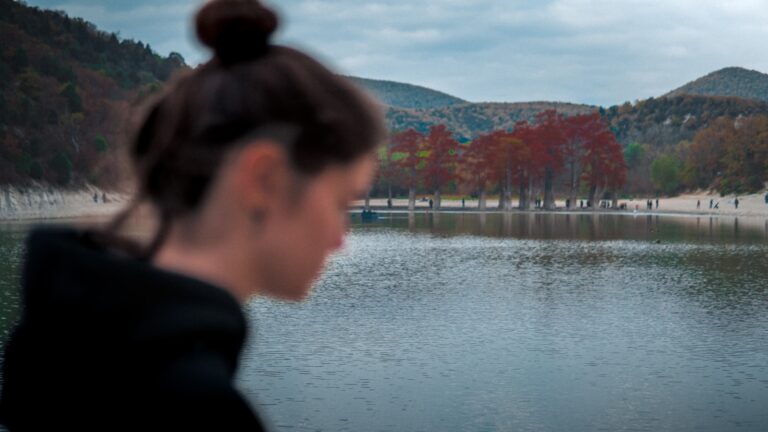Homecoming in Hoi An: A Native’s Return to a Changing Town
There’s something strange about coming home and realizing it no longer recognizes you. I was born in Hoi An, that once-quiet riverside town where mustard-yellow walls caught the last light of day like golden velvet, and where every corner once echoed with the voices of people I knew. But now, after years of living abroad, I come back to a town that smiles politely and calls me a foreigner. They use the word Viet Kieu—overseas Vietnamese—as if it puts a neat label on someone they no longer understand.
When I mention my grandfather’s name, a few old eyes brighten with recognition. It’s like opening a window into another time. But even those memories are fading. The maternity hospital where I was born? Gone. In its place, a sleek glass-fronted museum rises along what is now called Tran Hung Dao Street, next to a banyan tree whose roots twist through the pavement like questions that can’t be answered. It’s a beautiful museum, yes—but it’s not mine.
Mornings in Hoi An unfold slowly. The streets are still wrapped in mist at seven, and I slip into a quiet café on Tran Phu Street. Its wooden shutters creak when opened, and the air is thick with the smell of dark roasted Robusta coffee. By eight, the Old Town still feels deserted, as if it hasn’t quite woken up. The silence is only broken by the gentle rhythm of bamboo noodle presses clapping in the distance.
Hoi An’s new rhythm belongs to the tourists now. Most shops don’t bother opening until ten, just in time for the arrival of tour buses and groups of travelers snapping photos in rented traditional ao dai. The locals, the ones who shaped this town with their hands, have slipped into the background, retreating to the wet markets or disappearing entirely. I remember going with my grandmother to buy sticky corn cakes and sweet herbal jelly from the old stalls there. Now, those same stalls are crowded with visitors holding cameras instead of shopping bags.
But some things haven’t changed—at least not entirely. You can still find Hoi An’s spirit in a bowl of cao lau. Not the pale imitations served at upscale restaurants, but the real thing cooked in hidden kitchens down alleyways where old women still cook over open fires. I remember the stall run by a woman known only as Nam Co. It’s gone now, but people still speak of her the way others remember lullabies.
True cao lau is magic. The noodles are soaked in water drawn from ancient Cham wells, giving them a smoky bite. They’re tossed with caramelized pork, crunchy bits of fried dough, and a handful of bitter herbs from Tra Que village. That village, once all earthy devotion and weathered hands, has become a showcase for agro-tourism. Visitors now pay to plant mint under the watchful eye of a tour guide. There are selfie sticks where there used to be silence. It’s still beautiful—but it smells more like business than tradition.
Cua Dai Beach, where my grandmother used to take me in a cyclo, is another story of transformation. The coastline has been carved up by luxury resorts—The Anam, Four Seasons, and a handful of ambitious but half-finished hotel projects that stretch like unfinished dreams across the sand. Still, if you look hard enough, you’ll find quiet patches of beach where fishermen mend nets and barefoot kids leap through the waves. I rent a scooter and take the long way back, driving through narrow roads lined with rice fields where buffalo still pull plows beside new, shiny AI-powered irrigation systems. That’s Hoi An today—old and new sitting side by side, often not speaking to each other.
I once thought I might buy a small house here. Maybe something near the Thu Bon River, where I could grow old in peace. But that dream didn’t survive the 2024 real estate spike. Waterfront property now goes for around 135 million VND per square meter—about $5,400. Even a rundown heritage house costs around $1 million, and comes with restoration rules so strict they feel like a straightjacket. Every roof tile must be handmade. Every beam inspected by UNESCO consultants. My wife just laughed and said, “Let’s stay at the Allegro Hoi An. They have bathtubs with a lantern view.” She’s not wrong. We book a room at a modest guesthouse on Nguyen Hue Street instead, where $18 a night gets you a bed, a ceiling fan, and memories of the Hoi An I used to know. Breakfast? Clam rice at the market for just over a dollar, served with a side of gossip from old women who’ve lived here longer than I’ve been alive.
Hoi An is changing, and quickly. At An Bang Beach, cafes are full of digital nomads tapping away at laptops while sipping coconut smoothies. You can rent a desk and a view of the sea, all for the price of a $300 visa. But while some parts of town hum with global energy, others feel the weight of environmental stress. Saltwater intrusion is slowly killing the soil around Tra Que village, once famous for its vegetables. Now, they import water just to keep the plants alive.
Yet amidst the change, there are signs of resilience. In Kim Bong carpentry village, where boatbuilders once carved wooden hulls by hand, young artisans are laser-etching furniture for overseas markets. It’s not the same craft—but it’s still craft. Meanwhile, at night, the Old Town transforms into something close to magic. After 9 PM, motorbikes are banned and replaced with silent electric shuttles. Lanterns float on the river, glowing gently as tourists and locals alike pause to breathe in the calm.
I keep coming back to Hoi An, even if it no longer feels quite like mine. There’s something about the town at dusk—when the crowds thin and the light turns soft—that pulls at me. I sit on Cam Nam Bridge, eating grilled pork rice rolls from a street vendor, watching the reflection of lanterns flicker on the water. Across the river, old women light incense at Quan Am Pagoda. The smell of frangipani and fish sauce fills the air. It smells like my childhood.
Hoi An doesn’t know me anymore. Not really. But I still know her. I know her in the calloused fingers of the woman who serves cao lau. I know her in the feel of the rain as it runs down the timeworn walls. I know her in the quiet determination of a town trying to remember itself even as the world presses in. I will keep coming back, even if I no longer belong. Maybe one day, I’ll return only as a ghost, drawn by the scent of the past and the shadows of home.




